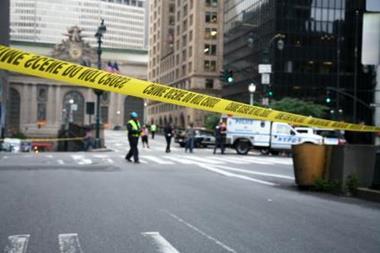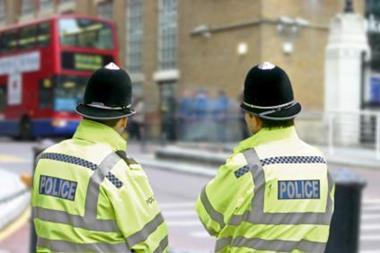The pending expiration of the Terrorism Risk Insurance Act (TRIA) on 31 December 2005, threatens to abruptly end the widespread availability of affordable terrorism coverage. Uncertainty has already been creeping back into commercial insurance markets and in the ongoing absence of a decision by Congress on whether to extend TRIA, that uncertainty is increasing.
For several months now, insurers have been making decisions about insurance coverage affecting policies that will be in force in the post-TRIA period, from 1 January 2006. Indeed, annual commercial policy renewals since 1 January this year have faced the possibility that there will be no federal backstop for terrorism losses occurring in 2006. For this reason, many insurers have obtained state regulatory approval to reinstate exclusions for terrorism losses effective 1 January 2006, if TRIA is not extended.
The end of TRIA would have a serious impact on many policyholders. For example, the task of finding affordable insurance coverage for the new buildings planned for Ground Zero, the site of the World Trade Center, presents a huge challenge and one that will be even harder to complete in the absence of a federal backstop for terrorism losses. The fact that the site has twice been the target of terrorists - the September 11, 2001 attack and the 26 February 1993 bombing - suggests that it could be so again. Failure to fully insure any element of this massive construction project could jeopardise its financing. This is a scenario likely to be played out countless times across the country in the months ahead.
Only since President Bush signed the Terrorism Risk Insurance Act of 2002 into law on 26 November 2002, has there been a mechanism in place to protect American businesses by minimising market disruptions and to ensure widespread availability and affordability of property and casualty insurance for terrorism risk. By all accounts, TRIA has been a success.
Each of the 6 million businesses operating in the United States today has been offered, at least three times, the opportunity to purchase terrorism coverage, usually at reasonable cost. Take-up rates for the coverage have been climbing steadily, from 23.5% of businesses in early 2003 to 44% during the third quarter of 2004, according to a study by Marsh, Marketwatch: Property Terrorism Insurance 2004. Likewise, Aon found that 57% of commercial property owners purchased terrorism insurance in the third quarter of 2004, compared to 24% in early 2003, reported in Terrorism Risk Management & Risk Transfer Market Overview in December 2004.
In the case of workers' compensation, a compulsory coverage for virtually all businesses, the take-up rate is effectively 100%. Without a federal backstop for terrorism losses, workers' compensation insurers could be extremely vulnerable. The terrorist attack of September 11, 2001 produced insured losses estimated at $32 billion, making it by far the most expensive natural or man-made catastrophe ever (Figure 1). Some 2,976 lives were lost and 2,250 people injured on that day. In addition to the record $20.6 billion in property and business interruption losses, the attack produced additional losses totaling nearly $12 billion, including the first ever disaster magnitude losses for workers' compensation insurers, estimated at $1.8 billion.
In its February 2005 report The End of Terrorism Insurance Could Bring Big Changes in the US, Standard & Poor's (S&P) notes that without the protection of a federal backstop for terrorism losses, workers' compensation insurers could face huge liabilities.
Similarly, a January 2005 Congressional Budget Office (CBO) report, Federal Terrorism Reinsurance: An Update, observes that in the event of TRIA's expiration, the workers' compensation market would bear much of the increased cost of terrorism coverage.
The CBO notes that if TRIA is allowed to expire and there is another large scale terrorist attack, insurance markets would probably be disrupted again, and coverage could be unavailable for some high risk properties.
It is important to note, however, that the CBO report was generally hostile toward TRIA extension.
Fundamentally, the current debate over whether or not TRIA should be extended reduces to a small number of arguments:
- Is terrorism a fully insurable risk?
- Is the property-casualty industry financially capable of paying losses from large scale terrorist attacks or sequences of attacks?
- Is it right for the state to share in the economic as well as the security consequences of declaring a "war on terrorism"?
These three questions are based largely on long standing and elementary principles of insurance, particularly as they apply to the modern threat of large scale terrorist attacks.
Is terrorism an insurable risk?
Throughout the history of the insurance industry, it has been clear that not all types of risk are fully insurable. There are four basic criteria that must be satisfied before a particular type of risk is deemed completely or even substantially, insurable:
- Estimable frequency
- Estimable severity
- Adequate spread/diversification loss
- Fortuitous/random nature of loss.
Terrorism, to varying degrees, violates all four of these traditional requirements.
Estimable frequency
The frequency of future terrorist attacks in the United States is unknown and, for the foreseeable future, unknowable. Estimating the incidence of acts of terrorism is fundamentally different and vastly more difficult than forecasting natural catastrophes, where insurers can learn much about the frequency (and severity) of events through historical claims data and meteorological and geological records. When it comes to terrorism, there are simply too few historical data points for insurers to build a data set that would produce credible (statistically useful) inferences about the specifics of future attacks.
Estimable severity
Estimating the severity of terrorist attacks is a relatively straightforward application of engineering principles, physics and medical/epidemiological science. Insurers, reinsurers and ratings organisations have used terrorism models to simulate the severity of millions of loss scenarios. A wide range of different disaster scenarios has been developed. An April 2004 report by Towers Perrin, for example, includes a series of examples of catastrophic workers' compensation terrorism losses from the Risk Management Services (RMS) event library (Figure 2). These range from:
- Sears Tower aircraft attack: A 747 is hijacked and flown into the Sears Tower, Chicago, during a peak working hour (2 PM on a weekday), causing the tower to collapse but not immediately. An estimated 1,300 would be killed and thousands of others injured - with up to $900 million workers' compensation loss.
- New York City anthrax release: Large anthrax attack in downtown New York City in peak working hour. Anthrax is weaponised and dispersed in aerosol form, resulting in inhalation of anthrax by a large number of people. Of more than 1 million people affected, most would require only minor medical attention, but there could be an estimated 173,000 fatalities - and up to $91 billion workers' compensation loss.
Analyses like these vividly illustrate why large scale terrorist attacks are at best only partially insurable.
Diversification (spread) of risk
Large scale terrorist attacks are not diversifiable risks. Far from affecting only individual or small groups of policyholders, terrorist attacks can easily produce massive numbers of claims simultaneously. The September 11 attacks produced more than 60,000 claims, and as mentioned earlier, caused substantial losses in many different lines of insurance. This indicates that losses are not only correlated across large segments of the insured population but also across coverage types. These clash coverages are very difficult for insurers (and their reinsurers) to manage as they are very hard to predict, and likely to cause severe aggregation of losses.
Fortuitous/random nature of loss
Insurability requires fortuity. Fortuity implies that individual insurable events are random in nature. But terrorist attacks are anything but a random event. Acts of terror are intentional and malicious acts of destruction.
Damage and destruction associated with acts of war have always been excluded from virtually all commercial property and liability insurance policies for more than a century. President Bush and members of his administration have on countless occasions characterised the September 11 attack as an "act of war" and the current state of affairs as a "war on terrorism."
Capital and claims paying capacity
TRIA is needed to ensure the long term viability of the entire property-casualty insurance industry. At any point in time, the capital resources available to insurers to pay claims is obviously finite. A limited pool of capital backs not only potential losses arising from future terrorist events but also dozens of other lines of insurance written across hundreds of millions of commercial and personal lines policies.
Policyholder surplus is the only valid metric for assessing the claims-paying resources of the property-casualty insurance industry, totaling some $347 billion as of 31 December 2003. Although a record, this figure grossly overstates the funds available to pay claims from future terrorist attacks, even though it has become the most widely cited number when the issue of claims paying capacity is discussed in the media and in legislative debates.
The $347 billion figure is illusory. Personal lines writers (insurers of autos and homes) account for $146 billion or 42% of the industry's total policyholder surplus, but are not eligible to participate in TRIA.
State Farm, for example, is the largest insurer of homes and cars in the United States, yet none of its $40.3 billion in surplus in 2003 is available to pay commercial terrorism claims. The surplus amounts which support lines of coverage excluded under TRIA, such as medical malpractice, and reinsurance account for an additional $58 billion. The industry's aggregate reserve deficiency (effectively a claim funding deficit on past claims which must be paid for out of current and future resources) further reduces claims-paying capacity by as much as $30 billion. After these adjustments, the surplus associated with "target commercial" lines of coverage was just $114 billion as of 31 December 2003 - amounting to just 33% of the industry total policyholder surplus and about 10% of its assets. This sum is little different from the $100 billion in surplus held by the comparable group of insurers before September 11, 2001, which fell to as little as $80 billion after the attack.
Because the losses from a terrorist attack or sequence of attacks are potentially unlimited, no amount of policyholder surplus is sufficient to cover the full range of attack scenarios. Even the federal government, with theoretically unlimited resources, caps its own liability under TRIA at $100 billion.
Terrorism and the role of the state
In addition to the factors just described, terrorist actions are inextricably related to the actions of the state. Unlike natural disasters, the US government controls virtually all of the intelligence about terrorist threats, the physical means of attacking them and the main defences against them. Additionally, military or foreign policy objectives pursued by the US government may influence the likelihood and intensity of terrorist threats.
It is not difficult to understand and agree with the experience and conclusions of many policy analysts and practitioners that government intervention in markets usually works less well than expected. Yet, it is impossible to argue that TRIA has not worked. And an essential, if little recognised, reason for that effectiveness is that TRIA bridges - however imperfectly - the divide between the inescapable responsibilities of the state and the historic incapacity of private insurance to deal with the risks of war. There is nothing unprecedented in the concept of TRIA. Public/private partnerships are the preferred - indeed the only - approach to terrorism risk adopted by societies around the globe. Nothing in US political or economic principles or experience precludes a cooperative public/private approach to insuring its people against the economic effects of a war in which both sectors have such stakes, involvement and responsibilities.
The January 2005 CBO report correctly states that the long term nature of terrorism risk calls for an examination of the most effective means for government and the private sector to manage this risk. Yet the report, which acknowledges the long term nature of the threat from terrorism, does not support an extension of TRIA. Indeed, the CBO argues that the higher cost and limited availability of terrorism coverage following TRIA's expiration might force asset holders to do more to mitigate possible losses.
It also concludes - in the face of many years of experience to the contrary with natural disaster risks - that TRIA's lapse might stimulate the formation of mutual reinsurance pools and capital market solutions, such as catastrophe bonds, because there are "indications that private reinsurers would fill much of the gap."
It is important to note that insurers strongly support risk mitigation efforts and TRIA does not remove incentives for policyholders to mitigate risk. Private industry is working closely with the Department of Homeland Security and the Treasury Department to implement programmes to reduce the likelihood of an attack and to minimise losses. Mitigation alone cannot remove the terrorist threat or significantly reduce losses from certain types of terrorist attacks, such as weapons of mass destruction. The interdependence of terrorism risk also limits the potential effectiveness of mitigation.
Moreover, it is unrealistic to expect that private reinsurance and the capital markets will be available to completely fill the void left by TRIA's expiration. If TRIA is not extended, demand for private reinsurance will soar far beyond the ability or willingness of the global reinsurance industry to supply it, given constraints on the size of the industry's capital base and the view by many reinsurers that some types of attack, such as nuclear, biological or chemical, are fundamentally uninsurable.
Despite initial forecasts that capital markets might provide a significant alternative source of funding for terrorism risks in the wake of the September 11, the use of the capital markets has been quite limited. Even in much better understood underwriting environments, for example natural catastrophe risk, capital markets have not shown an enormous appetite. The issue of catastrophe linked securities has fallen well below what was anticipated in the wake of Hurricane Andrew and today accounts for just a tiny fraction of the market for catastrophic loss transfer.
Conclusion
Congress is unlikely to pay any attention to the issue of TRIA extension until the US Treasury Department completes a mandated study of TRIA in June 2005, causing uncertainty surrounding its future to escalate. Taking into account the wide variety of potential scenarios, it is clear that the property-casualty insurance industry cannot be the sole bearer of financial risk associated with terrorist attacks. Insurers, with far more limited resources than Washington, and no meaningful ability to reinsure terrorism risk, will in many cases have no choice but to walk away from policyholders in the event TRIA is not reauthorised.
- Dr Robert Harwig is senior vice president and chief economist of the Insurance Information Institute. Claire Wilkinson is vice president, global issues with the Insurance Information Institute.
Web site: www.iii.org



















